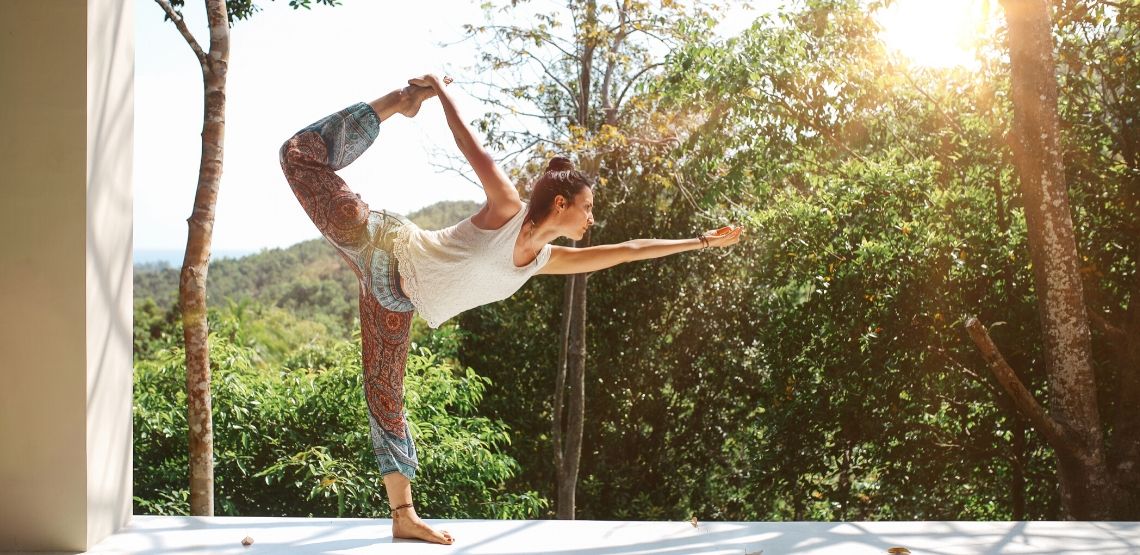The Difference Between Yoga and Pilates
Popular forms of lower impact exercise, such as yoga and Pilates, have both taken the fitness world by storm in recent years. Both yoga and Pilates help to strengthen the entire body and improve flexibility with low-impact, bodyweight movements, and both focus on benefits to both the body and mind.
While they are two different practices, the disciplines also have their fair share of similarities, which explains why many confuse the two. Often, fitness studios and gyms merge the two with Pilates-yoga hybrid classes that borrow moves from both.
Let’s dig into an overview of the differences between Pilates and yoga so you can appreciate each discipline for what it is, while understanding the semilunaris, differences, and when to use each for your specific fitness and health goals.
A Brief History of Yoga
Yoga may be trending in modern day fitness, but its origins are anything but recent. The discipline originated in ancient India thousands of years ago. Its exact place or time of origin is unclear.
While yoga can provide many benefits to the physical body, it also heavily emphasizes the mental and spiritual aspects of health, partially due to its religious roots in Buddhism and shamanism.
Yoga teaches and focuses on achieving mindfulness and mind-body connection through deep breathing practices and cultivating focus through flowing movements. The benefits can be felt in the body but can also help anxiety, pain, depression and high blood pressure.
There are many forms and styles of yoga such as Vinyasa, Buti, Bikram and hot yoga.
A Brief History of Pilates
Unlike yoga with its ancient roots, Pilates is actually a relatively recent discipline to emerge. It started in the 1920s as a form of rehabilitation for injured World War I soldiers. Joseph Pilates created the discipline along with his wife Clara. They taught classes at their gym where he taught his students to focus on breath, concentration, finding one’s center and control. It is much like the practice of yoga in this regard.
To this day, modern Pilates classes build on the same principals Joseph Pilates taught nearly 100 years ago.
Related Search Topics (Ads)
Similarities Between Yoga and Pilates
Here are a few of the commonalities both practices share:
- Both yoga and Pilates can be practiced using only your body and neither require any fancy equipment or weights (mats and blocks are sometimes used but not typically required).
- Yoga and Pilates both include many moves and poses done on the floor on a mat.
- Both practices stress holding poses for extended amounts of time while focusing on breathwork.
- Both yoga and Pilates are excellent for managing pain by quieting the mind and improving one’s emotional state.
- Both yoga or Pilates are ideal for those dealing with injuries or physical limitations that prevent them from doing more intense workouts.
The Differences Between Yoga and Pilates
With their shared focus on breathwork, mindset and similar movements of low-impact, bodyweight poses that strengthen and stretch, it is no wonder Pilates and yoga are often confused. However, certain significant differences do exist.
A major one is yoga’s emphasis on spirituality and meditation, which makes it unique. While Pilates certainly underlines the importance of the mind-body connection, it does not generally go into the spirituality that yoga does. Most yoga classes incorporate some element of silent meditation and clearing of the mind. You are less likely to find this in a Pilates class, which may be more intense and centered around moves that get your heart rate up rather than quieting the mind and breath. Of course, this totally depends since there are various styles of both Pilates and yoga.
While again, it depends on the style and class, in general, Pilates tends to be more focused on core-strengthening and toning moves, whereas yoga evenly focuses on all areas of the body. Another notable difference is yoga’s heavy focus on breathing techniques. Depending on the style of yoga, students may be instructed to breathe in and out audibly or in time with the movements. Pilates encourages mindful breathing but not usually to the same extent.
Which Works Best for You?
With so many styles and options of both yoga and Pilates to choose from, there is something for everyone and the best approach is to try out a variety of styles of each and see which resonates with you the most.
A good place to start is to ask yourself how important the meditative, spiritual aspect is to you. If you know you are under stress or need to work on quieting your mind or finding a greater connection to spirituality, yoga could be the better choice of the two. If this does not speak to you or you are looking for a physical workout to strengthen your core and back, Pilates will likely be your cup of tea.
Whichever you choose, you can expect a great low impact workout with numerous benefits to your entire body and your mindset.


